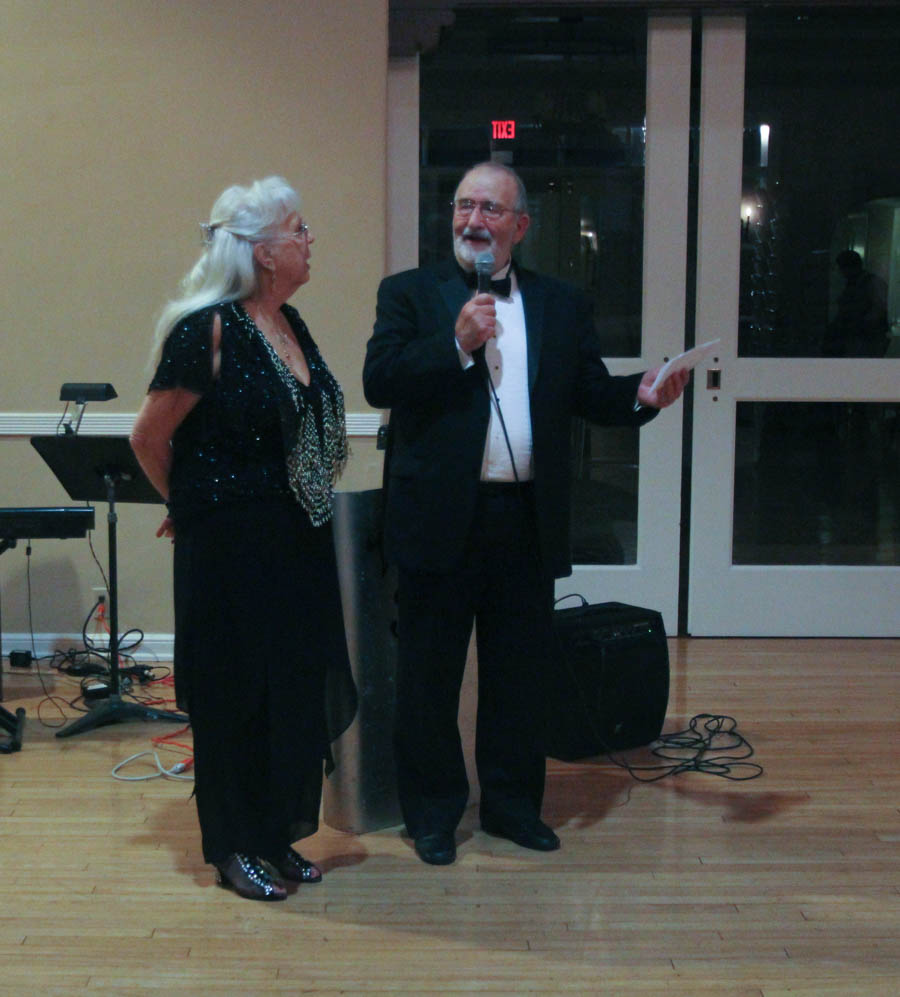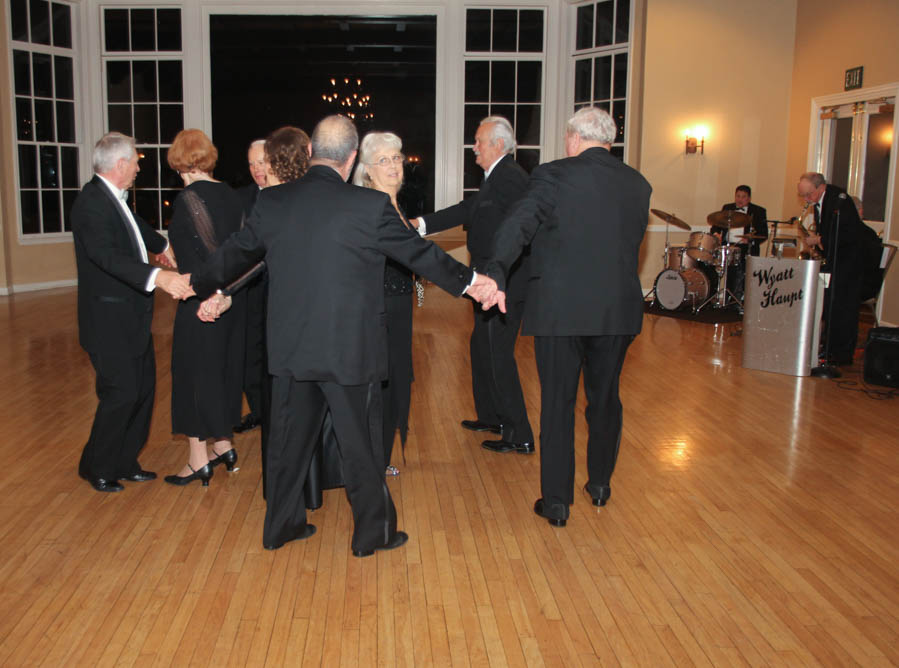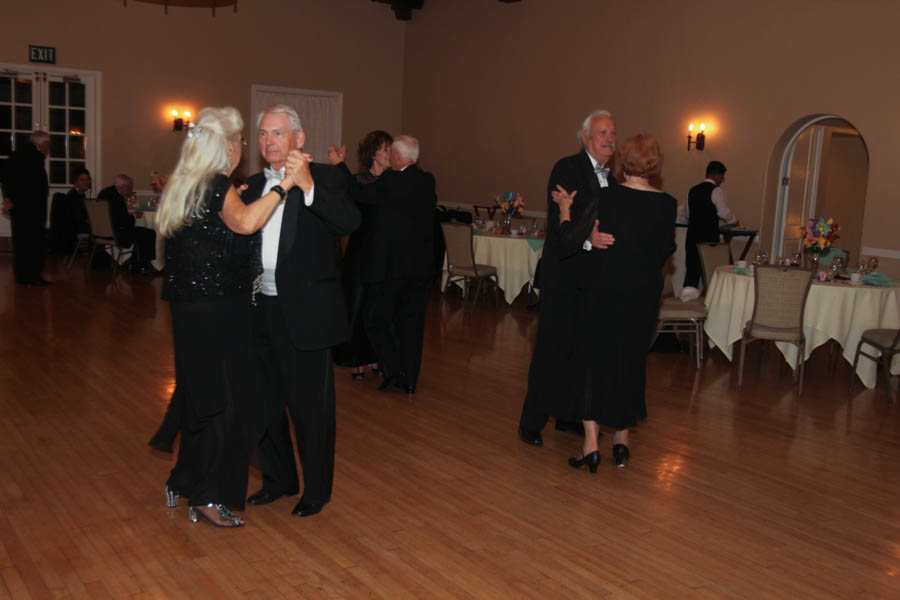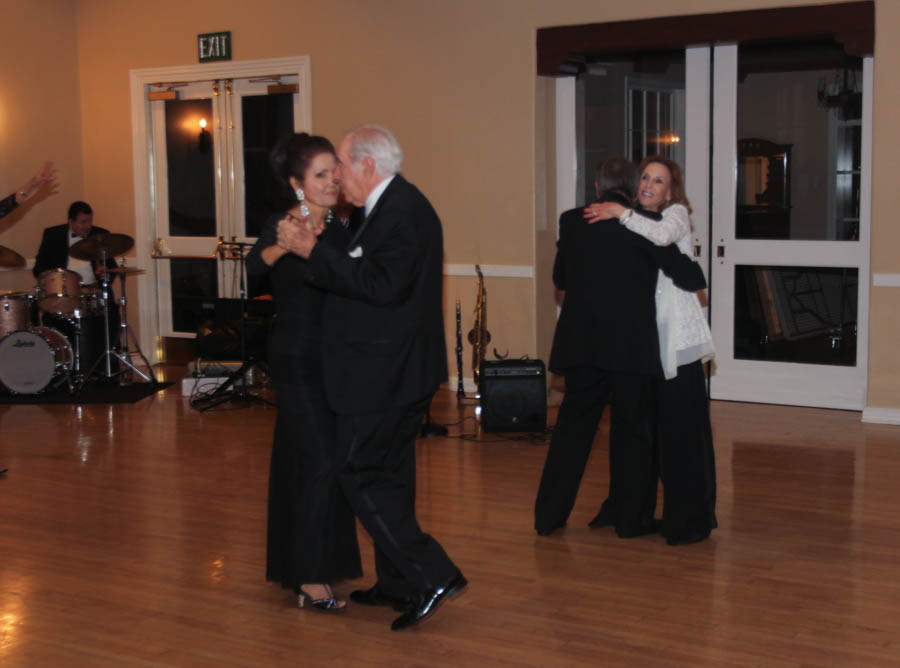The Dancings Gets Serious (Page Three)
|
|
Theme: March Winds
Page 1 - Meet and Greet | Page 2 - Who Was Here? Page 3 - Serious Dancing | Page 4 Comic View |
|


We await the "Words Of Wisdom" from Fearless Leader

"Ah... What I Supposed To Say?"

The proper words are ..... "Yes Dear"




Remember March also means St. Patrick's Day is just around the corner

It's time to dance!


Into the circle we go!
Where we stop NOBODY knows!

Eighteen times around the circle.... But who is counting?

Finally, time to dance!



Working hard pushing those notes!

We call him "The Voice"

Billy Paul... Always a smile!

The notes light up the room!


Around and around we go!

Dressed to the nine's


Oh dear... The camera was caught sneaking up on the table!

Pondering what to do!

Sinply elegant!

Thinking hard!

"Let's move around the floor"

Whooosh.... As they glide by!

The fireplace was fairly popular this evening... It is in the 40's outside!

Adjust the doo!


We love the tiara... Looks almost like it lights up!
Did You Know? - A tiara (from Latin: tiara, from Ancient Greek: τιάρα) is a jeweled, ornamental crown worn by women. It is worn during formal occasions, particularly if the dress code is white tie.
Today the word "tiara" is often used interchangeably with the word "diadem", and tiara is often translated to a word similar to diadem in other languages.
Both words come from head ornaments worn by ancient men and women to denote high status. As Geoffrey Munn notes, "The word 'tiara' is actually Persian in origin — the name first denoted the high-peaked head-dresses of Persian kings, which were encircled by 'diadems' (bands of purple and white decoration).
Now it is used to describe almost every form of decorative head ornament."Ancient Greeks and Romans used gold to make wreath-shaped head ornaments, while the Scythians' resembled a stiff halo that would serve as the inspiration for later Russian kokoshniks. The use of tiaras and diadems declined along with the decline of the Roman Empire and the rise of Christianity.

Love those smiles! Makes everyone happy! It's contageous!

Handmade pinwheels!


The winner of the centerpiece!

"Bye bye you all... See you soon!

See you soon!
Did You Know? - Ten fun facts:
-
The atmosphere moves the earth's temperatures from one place to another creating wind.
-
Warm air moves to the poles where it cools down.
-
Cold air moves toward the equator (the middle) where it warms up.
-
When winds blow really hard they're called: hurricanes, tornadoes, microbursts, zephyrs, sirocco, sharav, mistral or monsoons.
-
Wind moves from areas of high pressure to areas of low pressure.
-
When a storm needs a ride it hops onto the high-speed wind, that is above 30,000 feet, "jet stream"
-
The Trade winds (winds that move from east to west) get sailors on ships at sea from one place to another. The westerlies blow west to east. Ships need winds to avoid the horse latitudes, areas of calm or no wind.
-
The Doldrums are calm and light baffling winds that exists north of the equator between the northern and southern trade winds in the Atlantic and Pacific Oceans.
-
Air flows around the earth in a counterclockwise direction in the northern hemisphere and a clockwise direction in the southern hemisphere. This is due to the Coriolis effect. It is a common misconception that the Coriolis effect also controls how water drains from your sink, toilet or bathtub; however, the effect is so miniscule that the water is apt to spin any which way in either hemisphere.
- Wind direction is always the direction the wind comes from. The EAST wind comes from the East.

|
|
Theme: March Winds
Page 1 - Meet and Greet | Page 2 - Who Was Here? Page 3 - Serious Dancing | Page 4 Comic View |
|
